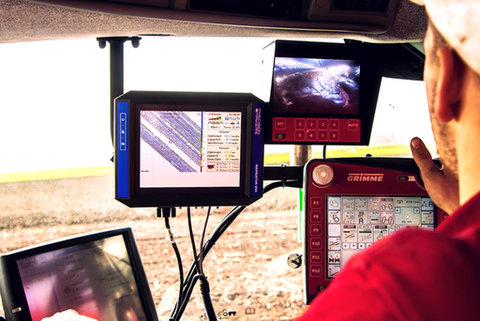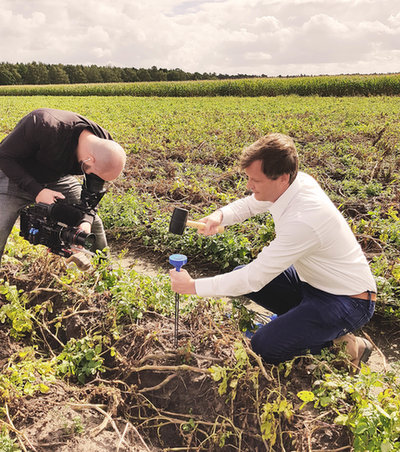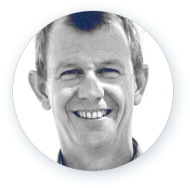INTERVIEW
In Europe, the actual yields in potato farming are about 30-40% below the potential yields.
‘The potential yield is based on a calculation. Water, light, temperature, nutrients: their optimum values for the potato plant lead to a potential yield of about 90 to 100 tonnes per hectare in our region. Most farmers only reach a yield of about 50 tonnes per hectare,’ Corné explains. ‘It isn’t easy to increase yields, because the potato plant reacts strongly when conditions are suboptimal.’
‘Precision farming techniques to increase yields can be divided into three categories: Steering techniques, monitoring techniques and decision support techniques, all of which help to react to variation. In our use-case, we focus on the last two aspects. With sensors, we measure soil quality and indicate differences on a map of the field. Based on this soil data, we plant the potatoes closer or further apart. Naturally, the technologies that help farmers decide how densely to grow and how much fertilizer/herbicide to use are the most interesting ones. Precise monitoring is a prerequisite needed to make the right decisions.’


‘During our first season, we’ve used the soil maps to plant the potatoes at a variable distance. We’ve also used them to apply nitrogen fertilizer, weed control and pesticides in variable quantities. Not all data is available yet, but the first results look promising,’ Corné states. ‘We’ve used about 25% less herbicides in different applications and about 15% less N-fertilizer in topdress applications. In terms of profit, higher yields are the most important objective. We don’t have the precise figures yet, though, as the potatoes were harvested only recently. Saving inputs like herbicide doesn’t mean very much in terms of economic costs and benefits. However, it reduces emissions and has a beneficial influence on soil health. It also leads to lower plant stress, potentially producing better harvest results.’
'The technology is ready, but it will only become mainstream when we make the connection to current farming practices.'
‘One of the things we really want to improve during this project is the usability of the system.’ Corné describes how the farmers participating in the use-case had to look at several screens at the same time during the tests. ‘We need to simplify that, obviously. In the second year, we will spend more time inviting farmers to our test fields. Their input is vital to develop a system that is easy to work with. The technology is ready, but it will only become mainstream when we make the connection to current farming practices.’
Partners in this use case:
Author: Renske Solkesz, Schuttelaar & Partners
use case
within-field management zoning
Corné Kempenaar
Senior Researcher precision farming Wageningen University & Research





